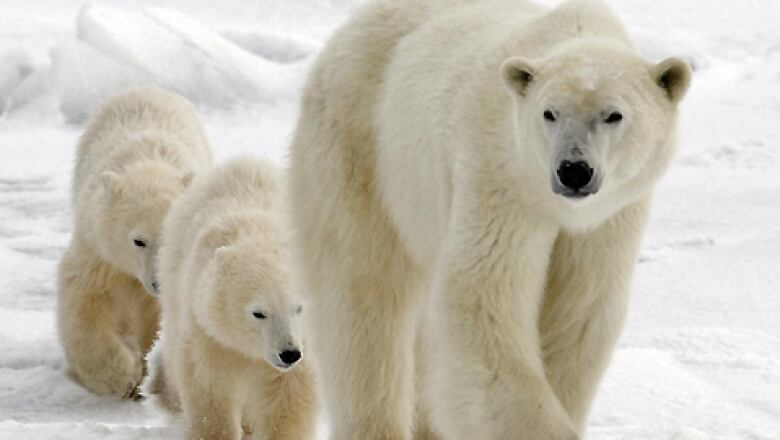Grizzlies spotted in Manitoba's north, says U of S researcher
Researcher says northern Manitoba outpost only known place in North America to see all 3 species of bears

A northern outpost in Manitoba has long been known as a gathering spot for polar bears, but a University of Saskatchewan researcher has helped establish it as the only known place in North America withall three species of bears.
Grizzly bears and black bears have also been spotted in the area, Douglas Clark, an associate professor with the School of Environment and Sustainability, told Afternoon Edition host Garth Materie.
"Most folks don't think of grizzly bears in Manitoba, but they're there and they've been showing up in our cameras," said Clark.
Clark and his students have been observing camera footage they've gatheredin the area, with the intent originally to study polar bears.
"The first year, we were just happy we had data and the cameras survived," he said.
The cameras allowed them to track bears coming on shore, when they were more active. It also allowed researchers to watch the bears' fat through the summer, after they had fed on seals on sea ice, and their thinning over the season, which he notes is important data for long-term conservation.

However, the presence of grizzly bears, as well as black and cinnamon-coloured black bears, turned up as an interesting observation.
Sightings of grizzly bears had been recorded in the 1990s, and traditional knowledge-keepers living in the area recalled to Clark a time when they had been seen in the further past, but Clark says it has become more common for these sightings.
"It's now not a question of are people going to see a grizzly bear this year up there, it's when are they going to see a grizzly bear (and) where are they going to see it."

Clark next hopes to work with local people, both Indigenous and non-Indigenous northerners who live and co-exist with polar bears, to discuss their observations and perspectives.
These are the people who are the "biggest reservoirs of knowledge" on polar bears, he said, and their insights into the camera footage will help complete the research picture.
"We want to take these two totally different ways of knowing and understanding polar bears and bring them together."












_(720p).jpg)


 OFFICIAL HD MUSIC VIDEO.jpg)
.jpg)



























































































